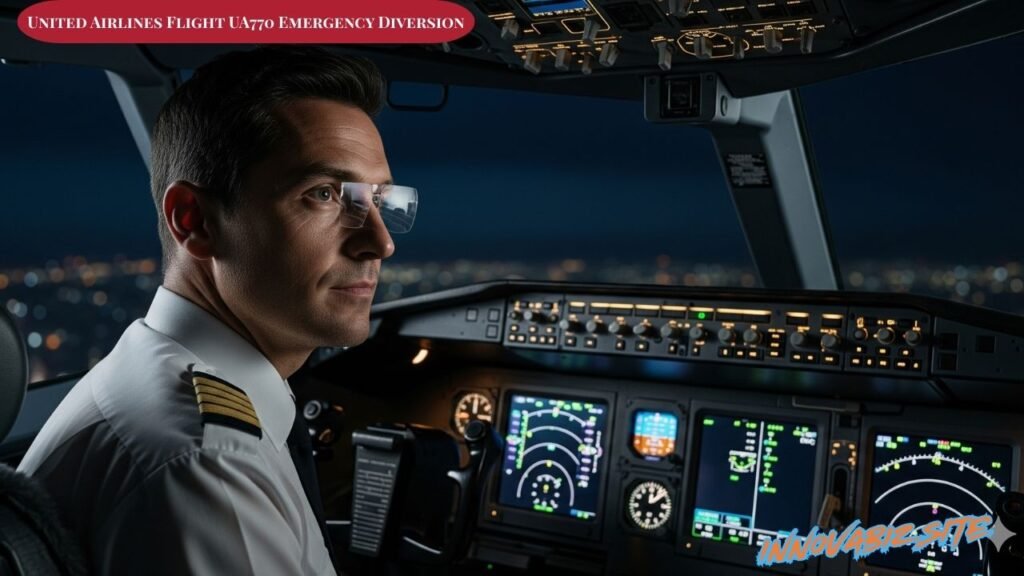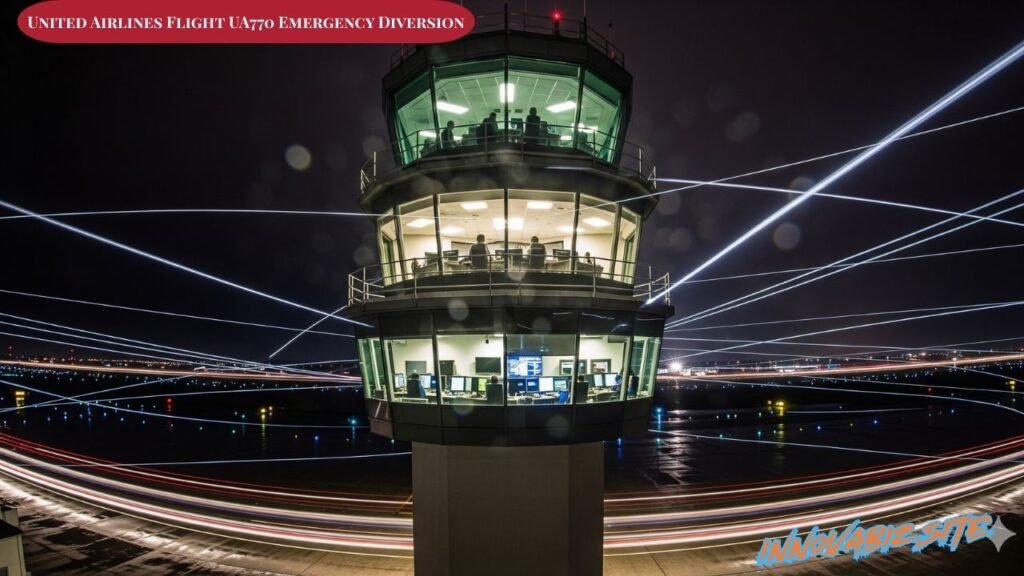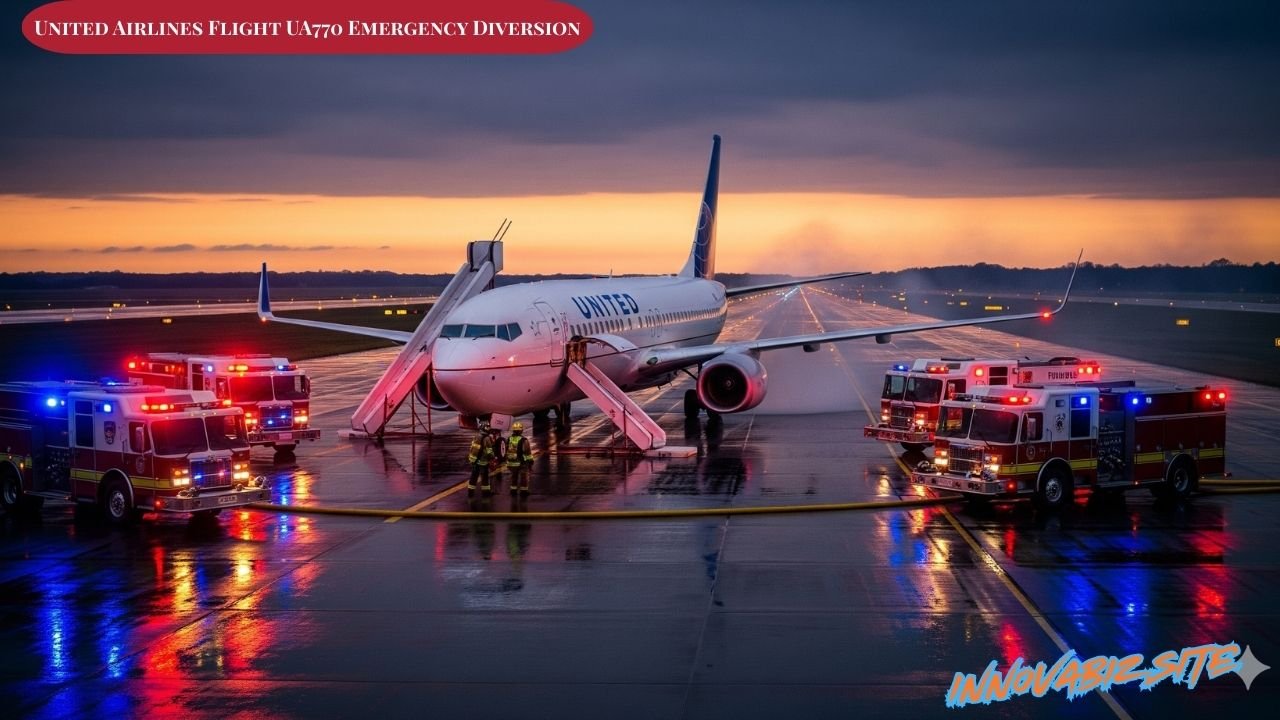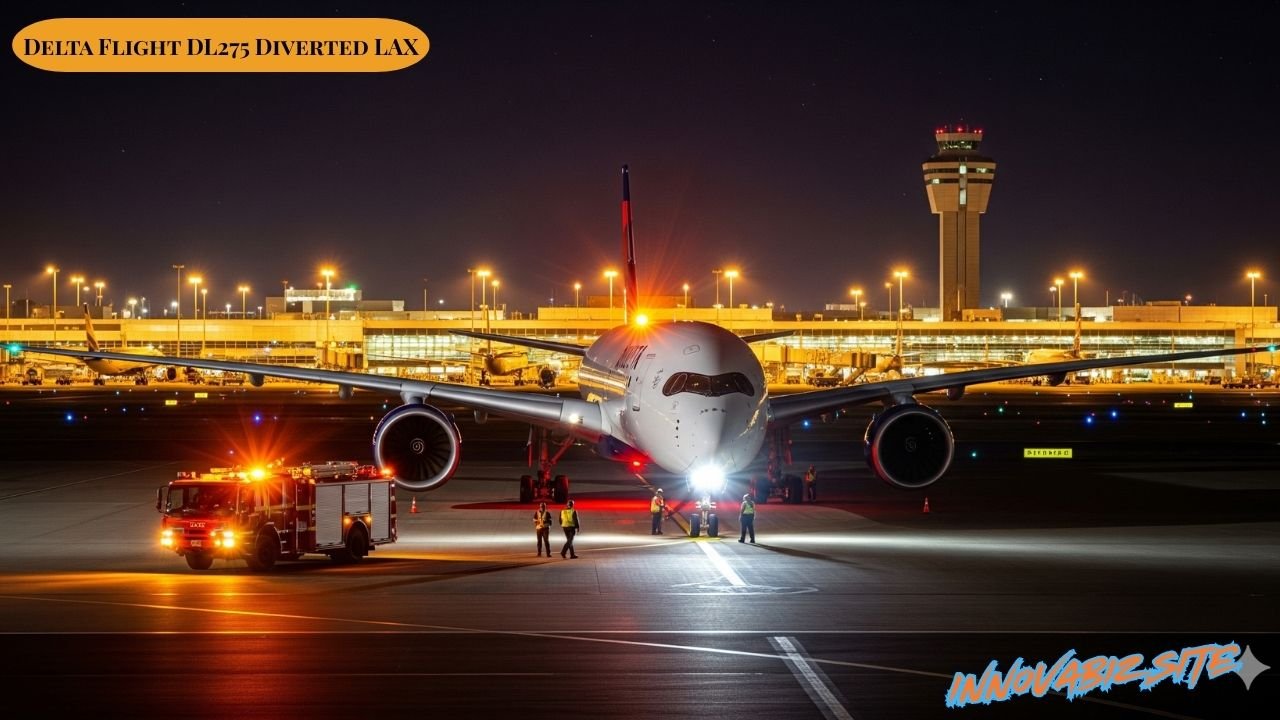On August 14, 2025, passengers aboard United Airlines flight UA770 experienced an unexpected turn of events when their aircraft was forced to make an emergency diversion. This incident, which involved a scheduled commercial flight traveling from Los Angeles International Airport (LAX) to Chicago O’Hare (ORD), demonstrates the critical importance of aviation safety protocols and the professionalism of airline crews during challenging situations.
Flight Details and Initial Departure
United Airlines flight UA770 began as a routine domestic flight, departing from Los Angeles with its destination set for Chicago O’Hare International Airport. The Boeing aircraft, carrying passengers and crew members, was expected to complete a standard cross-country journey. However, circumstances would soon require the flight crew to make crucial decisions that would alter the flight’s planned route.
The aircraft type involved in this united airlines flight ua770 emergency diversion was a Boeing aircraft, specifically reported as either a Boeing 737 or Dreamliner, both of which are commonly used for domestic routes of this distance. These modern aircraft are equipped with sophisticated safety systems and redundant backup mechanisms designed to handle various emergency scenarios.
Timeline of the Emergency Situation

Mid-Flight Crisis Development
During the flight’s progression toward Chicago, the crew began receiving alerts that indicated potential failure in critical aircraft systems. These warnings prompted immediate attention from the flight crew, who began following established emergency protocols. The nature of these alerts required careful evaluation and decisive action from the pilots.
Emergency Declaration Process
Following standard aviation procedures, the pilots declared an emergency and initiated diversion protocols. This declaration set in motion a coordinated response involving air traffic control, emergency services, and ground support teams. The united airlines flight ua770 emergency diversion status became a priority for aviation authorities, ensuring that all necessary resources were available for a safe resolution.
Landing and Diversion Coordination
Multiple airports were considered as potential diversion destinations, including Chicago, London Heathrow, and Denver, depending on the aircraft’s location and the specific nature of the emergency. The final diversion airport selection was based on proximity, emergency response capabilities, and the aircraft’s operational requirements.
Technical Analysis of the Emergency

Root Cause Investigation
The cause of this emergency situation involved an unexpected mechanical issue with potential system failure. Modern aircraft are designed with multiple backup systems, but when primary systems indicate problems, flight crews must respond swiftly and decisively. The specific technical details of this united airlines flight ua770 emergency diversion highlight the complexity of modern aviation systems.
Pilot Decision-Making Process
The flight crew’s evaluation process involved assessing the nearest suitable airports with emergency capabilities. This decision-making process considers factors such as runway length, emergency services availability, weather conditions, and the aircraft’s current operational status. The pilots demonstrated professional judgment in managing this challenging situation.
Aircraft Systems Response
Critical system alerts required immediate attention from the crew, who followed established procedures for diagnosing and responding to potential equipment malfunctions. These systems are designed to provide early warning of potential issues, allowing crews to take preventive action before situations become more serious.
Diversion Logistics and Airport Selection

Selection Criteria for Emergency Landing
The choice of diversion airport involved several critical factors. Proximity to the incident location was paramount, but equally important were the airport’s capabilities for handling large aircraft with advanced emergency facilities. Fire services and emergency preparedness at the chosen airport played crucial roles in ensuring passenger and crew safety.
Air Traffic Control Coordination
The united airlines flight ua770 emergency diversion status required coordination with air traffic control systems. Nearby flights were rerouted or delayed as controllers accommodated the emergency aircraft’s priority landing requirements. This coordination demonstrates the collaborative nature of aviation safety management.
Emergency Services Preparation
Ground-based emergency services prepared for the aircraft’s arrival, positioning fire trucks, medical personnel, and other emergency equipment as standard protocol. These preparations ensure that any potential issues during landing can be addressed immediately.
Passenger and Crew Experience
Safety Outcome Achievement
The emergency landing concluded successfully without any injuries to passengers or crew members. This outcome reflects the effectiveness of modern aviation safety systems and the professional training of airline personnel. The safe resolution of this united airlines flight ua770 emergency diversion demonstrates the robustness of current safety protocols.
Passenger Impact Management
While passengers experienced unexpected disruption and delays, the airline worked to minimize inconvenience while prioritizing safety. The crew maintained clear communication throughout the emergency, helping passengers understand the situation and remain calm during the diversion process.
Professional Crew Response
The flight crew’s handling of this emergency situation exemplified the high standards of training and professionalism expected in commercial aviation. From the initial system alerts through the successful emergency landing, the crew followed established procedures while making real-time decisions based on changing circumstances.
Broader Aviation Industry Context
Industry Safety Standards
This incident demonstrates the competency of airline personnel and safety systems in modern aviation. The successful resolution of the united airlines flight ua770 emergency diversion status serves as a reminder that aviation safety protocols exist for important reasons and are regularly tested in real-world scenarios.
System Resilience Demonstration
The event highlights the resilience of modern aviation systems and procedures. Multiple layers of safety systems, from aircraft design to crew training to ground support coordination, worked together to ensure a positive outcome.
Training and Preparedness Validation
Regular training exercises and emergency preparedness protocols proved their worth during this real-world emergency situation. The crew’s ability to manage the crisis effectively demonstrates the value of ongoing professional development in aviation safety.
Aftermath and Recovery Operations
Operational Recovery Process
Following the emergency landing, United Airlines implemented standard procedures for passenger accommodation and rebooking. These operations ensure that affected passengers can continue their journeys with minimal additional disruption while maintaining the airline’s operational integrity.
Investigation and Analysis
Standard post-incident analysis and reporting procedures were initiated to understand the technical causes and review response protocols. These investigations contribute to continuous improvement in aviation safety and emergency response procedures.
Safety Protocol Reinforcement
The successful resolution of this emergency serves as validation of established emergency response procedures. The united airlines flight ua770 emergency diversion provides valuable lessons for the aviation industry regarding crisis management and safety protocol effectiveness.
Lessons Learned and Industry Impact
Emergency Response Excellence
This incident demonstrates how proper training, modern aircraft systems, and coordinated emergency response can result in successful outcomes even during challenging situations. The professionalism displayed by all involved parties reflects well on the aviation industry’s commitment to safety.
Minimal Operational Disruption
Despite the emergency nature of the situation, the overall impact on the broader aviation system was minimal. This demonstrates the effectiveness of current air traffic management systems and emergency response coordination protocols.
Continuous Improvement Opportunities
Every emergency situation provides opportunities for learning and improvement. The analysis of this united airlines flight ua770 emergency diversion will contribute to ongoing enhancements in safety procedures, crew training, and emergency response protocols.
Conclusion
The United Airlines flight UA770 emergency diversion on August 14, 2025, serves as an excellent example of how modern aviation safety systems, professional crew training, and coordinated emergency response work together to ensure passenger safety. While no one hopes for emergency situations, this incident demonstrates that when they do occur, the aviation industry is well-prepared to handle them effectively.
The successful resolution of this emergency, with no injuries and minimal long-term disruption, reinforces confidence in commercial aviation safety. The united airlines flight ua770 emergency diversion status was managed professionally from initial detection through final resolution, showcasing the robust nature of current aviation safety protocols and the dedication of aviation professionals to passenger welfare.





